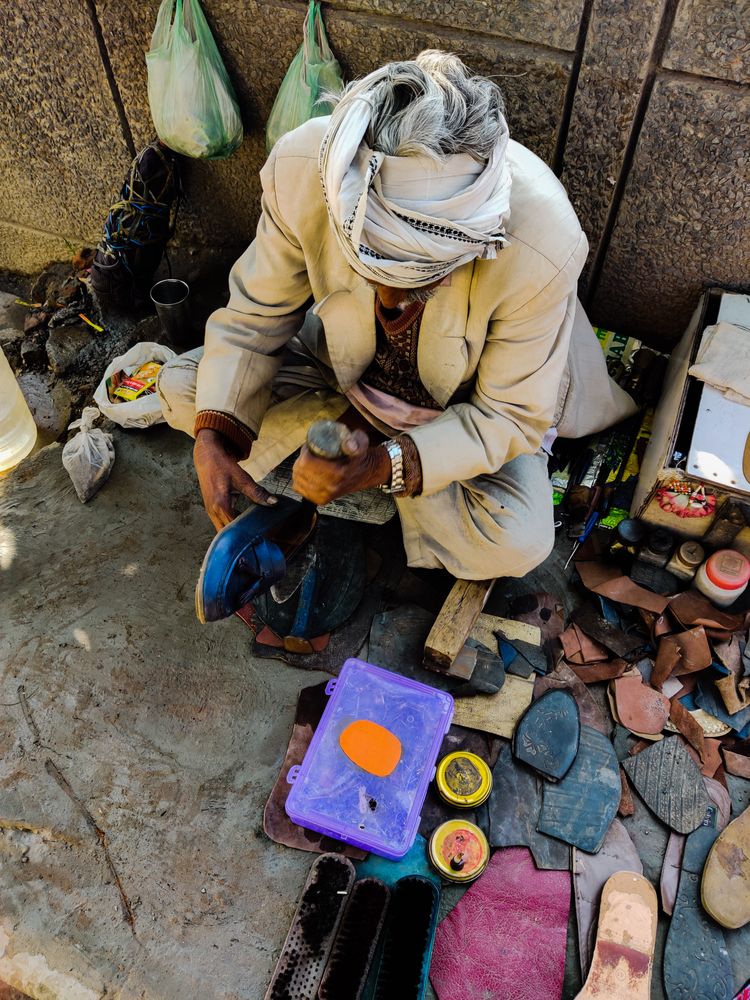For the past three years, I have been visiting Chandni Chowk every month.
Every visit reeks of a strange sense of familiarity, not just of the lanes of Kinnari Bazaar and Nai Sadak but also of some faces. It has become a monthly ritual for me to greet these familiar faces, who are always eager to talk, or now that I think about it, also to be heard.
For me, one such face is Rampyari. Rampyari is in her late 60s who often sits outside the exit gate of Chandni Chowk metro station, selling sliced cucumbers for the past two years. The last time I met her was sometime in October when she jokingly mentioned that she was experiencing a constant headache for the past few days: “Ajeeb sa dard rehta hai sar mein. Aisa lagta hai jaise log chilla chilla kar madad maang rahein ho (I have been experiencing a strange headache. It feels like as if people are shouting for help)”.
At that point in time, I was confused by this strange analogy of her headache with people crying for help. I asked her if she thought that her headache had something to do with the constant chaos and noise on the streets of Chandni Chowk.
“Yeh shor kahan hai? Yeh to chahal- pahal hai. Raunaq lagi rehti hai. Shaant ho jaye agar yeh jagaah toh vo shaanti andar he andar kha jayegi (This is not noise. This is the hustle-bustle which keeps this place lively. If this place becomes silent, it will eat me up from within),” she said.
Within a stretch of less than a kilometre, one can spot hundreds of faces like Rampyari, rushing past the everyday hustle-bustle of Chandni Chowk. The park next to the metro station hosts a cobbler with strings of colourful shoelaces hanging onto a wooden box. A few steps away from him stands a young boy selling earphones for Rs 50 each. After walking a few steps into the main market, there sits an aged man, always dressed in a white shirt and maroon pants, with hundreds of coins and torn currency.

As one walks further towards Bhagirath Palace, one can often find ‘Delhi’s Red Caps’ with a steel needle and cotton wool in their hand – the ear cleaners. In every corner, there are a number of mobile water trollies with overarching colourful umbrellas, selling a glass of water for Rs 2. In the narrow yet magnificent lanes of Dariba, one can always find a young boy in his early teens selling the famous daulat ki chaat.
While you stand next to him and glance over the streets of Chandni Chowk, you will find hundreds of men carrying heavy boxes loaded with electric lights, wooden logs, books, wedding cards and at times, even boxes full of empty bottles of Coco-Cola(which for Rampyari is still Campa Cola!) on their backs.
Also read: Apathy in the Time of Corona
Ever since the lockdown has been announced, I cannot help but think of all these people and Rampyari. The streets of Chandni Chowk must be empty now. No buyers. No noise. No chaos. What is this unusual silence making them feel? While everyone in Delhi is boasting of clean air and a decline in noise pollution, what do the silent streets of Chandni Chowk, without any chahal-pahal look like to each one of them? What does this silence mean to someone whose everyday earnings from selling sliced cucumbers suffice for her daily needs and on other days, the same pieces of cucumber constitute her three-time meal?

Sadly, it has taken a life-altering pandemic for us to shift our gaze towards the lives of millions of such informal workers in India. However, still, our everyday discussions touch upon domestic workers and informal labourers, more often than not, in the context of the distress our households are facing in their absence.
At the same time, for some of us, once in a while, a WhatsApp forward or a Facebook video with hundreds of migrant workers, walking hundreds of kilometres with their little children on their shoulders, seems to equip our privileged selves with a vicious veil of apathy, embedded in the banal idea of ‘unity’ to fight the pandemic. Little do we realise that for over a million of India’s population, every day is a pandemic of poverty, hunger and a never-ending struggle of survival.
All of a sudden there has been an emergence of a widely ignorant social media brigade, leaving no stone unturned in reminding the poor, the sick and the hungry about their unswerving responsibility towards India’s ‘united’ struggle against COVID-19, conveniently bailing out the state and each one of us from any responsibility towards the poor and the marginalised, not just today, but on every day when a child dies of hunger or a vegetable-seller becomes a victim of police brutality for trying to feed his children.

While the poor seem to ricochet between the despair of the pandemic on one hand and the everyday neglect of the state (which includes each one of us) on the other, this lockdown has only revealed the underlying fragility of the real or the ‘normal’ world embodied by Rampyari and many others like her.
Then how does our understanding of the complexities inherent in the closed categories of ‘work’, ‘informal work’ and ‘labour’ seek to accommodate these outliers, who are not just outliers of the everyday political economy but also fail to find a place in our mind or thoughts as fellow human beings?
Maybe the next time when you and I walk past the chahal-pahal of the streets of Chandni Chowk, we will look around for some familiar faces, beyond the farce of human hierarchy, to think of how the everyday worlds of Rampyari and many others are put together, however precariously, yet again.
Neymat is an aspiring anthropologist from Delhi with a keen interest in the intersectionality between childhood, illness, biomedicine, gender and labour.
All images provided by author
